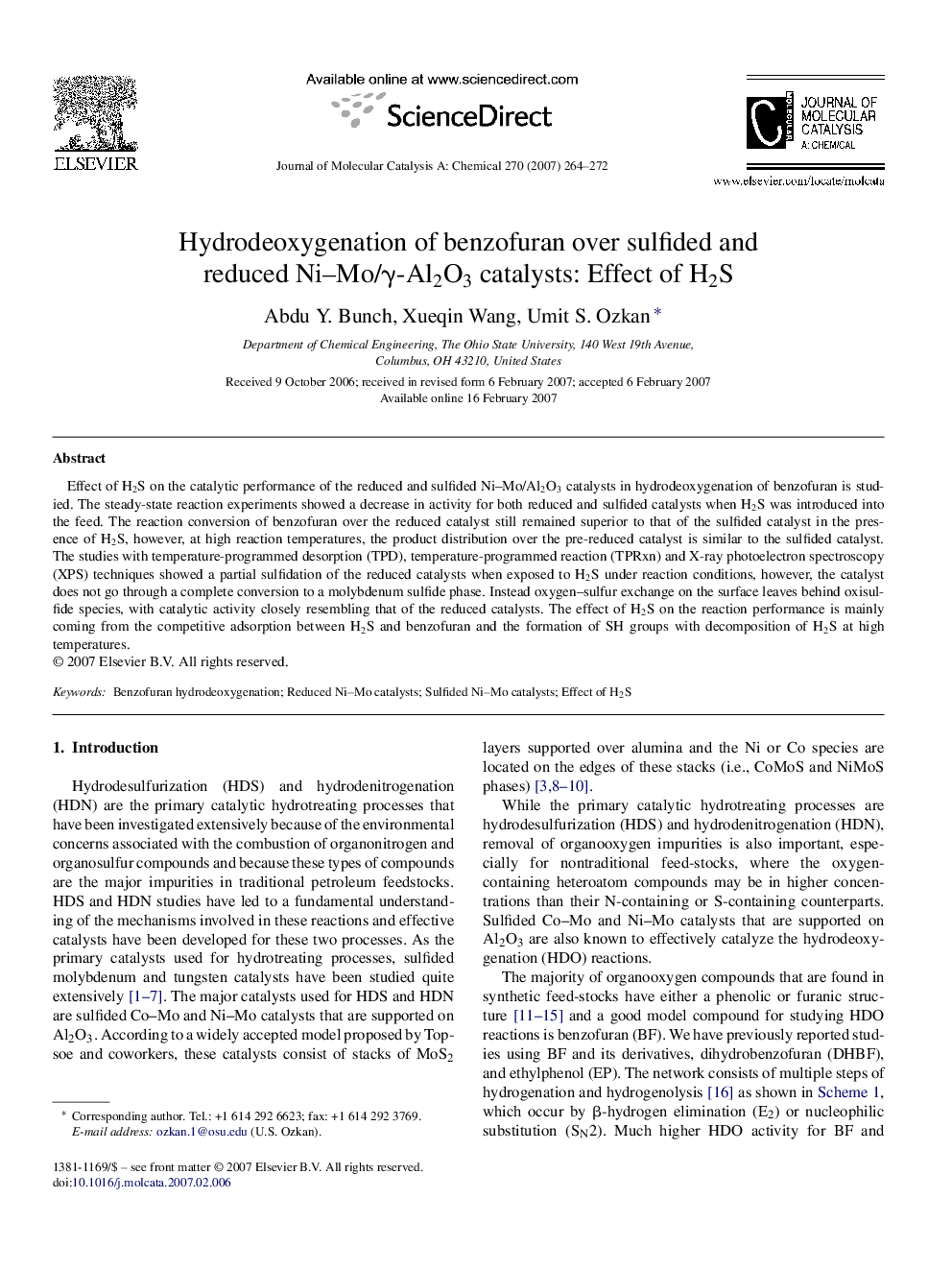| کد مقاله | کد نشریه | سال انتشار | مقاله انگلیسی | نسخه تمام متن |
|---|---|---|---|---|
| 68048 | 48501 | 2007 | 9 صفحه PDF | دانلود رایگان |

Effect of H2S on the catalytic performance of the reduced and sulfided Ni–Mo/Al2O3 catalysts in hydrodeoxygenation of benzofuran is studied. The steady-state reaction experiments showed a decrease in activity for both reduced and sulfided catalysts when H2S was introduced into the feed. The reaction conversion of benzofuran over the reduced catalyst still remained superior to that of the sulfided catalyst in the presence of H2S, however, at high reaction temperatures, the product distribution over the pre-reduced catalyst is similar to the sulfided catalyst. The studies with temperature-programmed desorption (TPD), temperature-programmed reaction (TPRxn) and X-ray photoelectron spectroscopy (XPS) techniques showed a partial sulfidation of the reduced catalysts when exposed to H2S under reaction conditions, however, the catalyst does not go through a complete conversion to a molybdenum sulfide phase. Instead oxygen–sulfur exchange on the surface leaves behind oxisulfide species, with catalytic activity closely resembling that of the reduced catalysts. The effect of H2S on the reaction performance is mainly coming from the competitive adsorption between H2S and benzofuran and the formation of SH groups with decomposition of H2S at high temperatures.
Effect of H2S on the catalytic performance of the reduced and sulfided Ni–Mo/Al2O3 catalysts in hydrodeoxygenation of benzofuran is studied. A change in product distribution is observed due to a change in the relative abundance of hydrogenation and hydrogenolysis sites, which promote different routes in the reaction scheme shown in the figure. Figure optionsDownload as PowerPoint slide
Journal: Journal of Molecular Catalysis A: Chemical - Volume 270, Issues 1–2, 1 June 2007, Pages 264–272